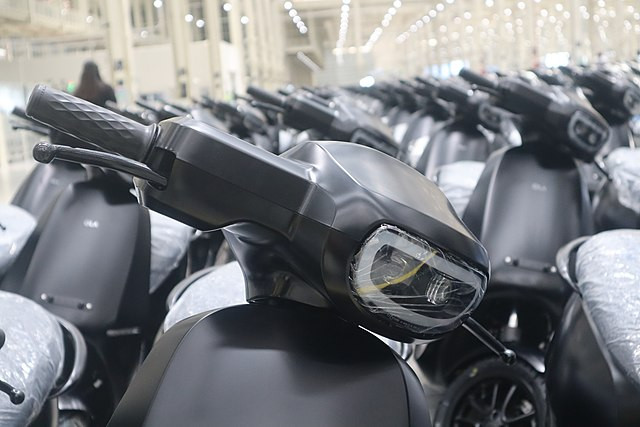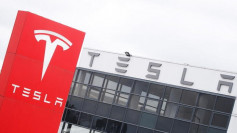Ola Electric, the Indian electric vehicle startup backed by SoftBank, made a striking entrance into the stock market on Friday, with its shares surging 20% on their debut. This impressive performance has positioned the company with a valuation of approximately $4.8 billion, marking it as one of India's most significant market debuts this year.
The initial public offering (IPO), which raised over $730 million, is the largest in India so far in 2024. The shares were priced at 76 rupees (approximately 91 cents) but quickly rose to 91.20 rupees by late afternoon trading, reflecting strong investor confidence in the burgeoning electric vehicle (EV) sector in India.
The surge in Ola Electric's stock is a testament to the growing optimism surrounding the company's future in India's rapidly expanding EV market, particularly in the two-wheeler segment. Ola Electric, which only began shipping its electric scooters two and a half years ago, now commands a dominant 39% market share in the electric scooter segment as of July. This dominance has bolstered investor confidence, especially as India shifts towards cleaner energy under the government's ambitious initiatives.
The Indian EV market is still in its early stages but is expected to see significant growth. According to McKinsey & Co., electric two-wheelers could account for 60% to 70% of all new scooter sales in India by 2030. This trend represents a massive opportunity for Ola Electric, which is also planning to launch its first electric motorcycles in the second half of 2025, further expanding its footprint in the country's two-wheeler market.
Bhavish Aggarwal, the high-profile entrepreneur behind Ola Electric and also the co-founder of Ola Cabs, has positioned the company to handle everything from design to manufacturing and battery production, drawing comparisons to global EV leader Tesla. However, despite the company's rapid revenue growth-90% year-on-year for the year ending March 31-Ola Electric has yet to turn a profit. The company's losses have widened by 8% over the same period, a fact that has not gone unnoticed by analysts.
"Our focus will be to build profitable growth for investors to also feel that there is a long-term profitability journey here," Aggarwal told CNBC-TV18 on Friday after the company's successful debut at the National Stock Exchange (NSE).
The funds raised from the IPO will be primarily allocated to research and development, as well as the expansion of Ola Electric's gigafactory battery plant. The company aims to commence commercial production of its own battery cells by early 2025, a move that is expected to make its electric scooters more affordable and improve overall profitability.
The broader market sentiment also played a role in Ola Electric's strong debut. The Nifty 50 index rebounded by about 1.3% over four sessions following a dip earlier in the week, which analysts attribute to easing U.S. recession worries. "Despite receiving demand well below street expectations, Ola listed well above street expectations, which can be attributed to market mood," said Prashanth Tapse, senior vice president of research at Mehta Equities.
Ola Electric's strong entry into the stock market mirrors the growing confidence in India's EV sector, especially as the government continues to push for greater adoption of electric vehicles. The company's ambitious plans to dominate the two-wheeler market, coupled with its expansion into electric motorcycles, have positioned it as a key player in this evolving landscape.
However, the company's path to sustained profitability remains a significant challenge. While Ola Electric has seen its revenues soar, the pressure to turn those revenues into profits will only intensify as it continues to scale up its operations and compete in a market that is becoming increasingly competitive.






